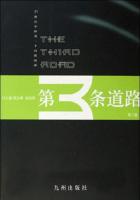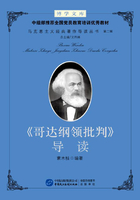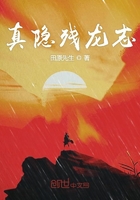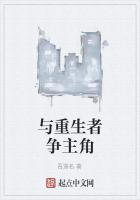[144]Nehru J.The Discovery of India.Calcutta:The Signet Press,1946;New Delhi:Penguin Books India,2004.
[145]Palmer N D.South Asia and United States Policy.Boston:Houghton Mifflin,1966.
[146]Palmer N D.The United States and India:the Dimensions of Influence.New York:Praeger,1984.
[147]Perkovich G.India's Nuclear Bomb:The Impact on Global Proliferation.Los Angeles:University of California Press,1999.
[148]Rahman M.Divided Kashmir:Old Problem,New Opportunities for India,Pakistan and the Kashima People.Boulder:Lynne Rienner Publishers,Inc.,1996.
[149]Rose,Leo E.,and Kamal.Matinuddin,eds.,Beyond Afghanistan:the Emerging US‐Pakistan Relations,Berkeley:Institute of East Asian Studies,University of California,1989.
[150]Saha S C.Indo‐U.S.Relations,1947—1989:A guide to Information Sources.New York:P.Lang,1990.
[151]Sawhny K R,ed.Kashmir:How far Can Vajpayee and Musharraf Go.New Delhi:Peace Publications,2001.
[152]Shalendra D,ed.The Asia‐Pacific in the New Millennium:Geopolitics,Security,and Foreign Policy.Berkeley:Institute of East Asian Studies,2000.
[153]Sharan P.Government and Politics of India.New Delhi:Metropolitan,1984.
[154]Sheshabalaya A.Rising Elephant:The Growing Clash with India Over White‐Collar Jobs and its Challenge to America and the World. NewDelhi:Mac Millan India Ltd.,2005.
[155]Shivam R K.India's Foreign Policy:Nehru to Vajpayee.New Delhi:Commonwealth Publishers,2001.ingh J,ed.Road ahead:Indo‐U.S.Strategic Dialogue.New Delhi:Lancer International,1994.
[157]Singh J.Defending India.London and New Delhi:Macmillan,1999.
[158]Singh S.China‐South Asia:Issues,Equations,Policies.New Delhi:Lancer's Books,2003.
[159]Siwach J R.Dynamics of Indian Government and Politics.New Delhi:Sterling Publishers Private Limited,1990.
[160]Smith D O.From Containment to Stability:Pakistan‐United States Relations in the post Cold War Era.Washington DC:Institute for National Strategic Studies,1993.
[161]Tabassum,Shaista,Nuclear Policy of the United States in South Asia:Proliferation or Non‐proliferation(1947—1990),Karachi:Royal BookCompany Pakistan,2003.
[162]Tahir‐Kheli,S R.India,Pakistan,and the United States:Breaking with the Past.New York:Council on Foreign Relations Press,1997.
[163]Talbot I.Pakistan:A Modern History.New York:St.Martin's Press,1998.
[164]Talbott S.Engaging India:Diplomacy,Democracy,and the Bomb.Washington DC:The Brookings Institution Press,2004;New Delhi:Penguin Books India,2004.
[165]Tellis A J,et al,eds.Limited Conflict Under the Nuclear Umbrella:Indian and Pakistani Lessons from the Kargil Crisis.Santa Monica,Calif.:Rand,2001.
[166]Thomas R G C,Gupta A,eds.India's nuclear security.Boulder:L.Rienner Publishers,2000.
[167]Thomas R G C,ed.Perspectives on Kashmir:The Roots of Conflict in South Asia.Boulder:West view Press,1992.
[168]Vakil F D,Shivaji R D H.Indian Government and Politics.New Delhi:Sterling Publishers Private Limited,1990.
[169]Wayne W.Emergence of Bangladesh:Problems and Opportunities for A Undefined American Policy in South Asia.Washington DC,1973.
[170]Weinbaum M G,Kumar C,eds.South Asia Approaches the Millennium:Reexamining National Security.Boulder:West view Press,1995.
[171]Wiarda H J,ed.U.S.Foreign and Strategic Policy in the post‐ColdWar era:A Geopolitical Perspective.West port:Greenwood Press,1996.
[172]Zalmay K,et al,eds.The United States and Asia:Toward a New U.S.Strategy and Force Posture.Rand:2001.
[173]Ziring L.Pakistan at the Crossroads of History. Oxford:Oneworld,2003.
英文文献(论文、报告)部分
[174]Abbas A.Impact of“9·11”on Smaller States of South Asia.Strategic Studies,2002,22(3),71~89
[175]Abhay K.U.S.War on Terrorism and Its Implications for India.Trishul,2002,15(1),1~10
[176]Ahmed A.Pakistan's Nuclear Weapons Program:Turning Points and Nuclear Choices.International Security,1999,23(4),178~183
[177]Ali M R.USA and South Asia in the New Millennium.Regional Studies,2004,22(3),3~33
[178]Arnett E.Nuclear Stability and Arms Sales to India:Implications for U.S.Policy.Arms Control Today,1997,27(5),7~11
[179]Ayoob M.India Matters.The Washington Quarterly,2000,23(1),27~39
[180]Ayoob M.South Asia's Dangers and U.S.Foreign Policy.Orbis,2001,45(1),123~134
[181]Bajpai K.Add Five“E”s to Make a Partnership.The Washington Quarterly,2001,24(3),83~94
[182]Baral J K.U.S.War against Terrorism:Implications for South Asia.Strategic Analysis,2002,26(4),508~517
[183]Bereuter D.Perspectives of U.S.National Interests in Asia.The Seventh Annual B.C.Lee Lecture,The Heritage Foundation,2001.
[184]Bhatty M A.Changing U.S.Perceptions on South Asia.Regional Studies,1992—1993,11(1),3~34
[185]Blank O.Kashmir:Fundamentalism Takes Roots.Foreign Affairs,1999,Spring,36~53
[186]Bose TC.United States and South Asia:The Nuclear Proliferation Dimension.Strategic Analysis,1994,16(12),1597~1616
[187]Bowen L P,Wolven D.Command and Control Challenges in South Asia.The Nonproliferation Review,1999,Spring‐Summer,25~35
[188]Budania R.United States and South Asia:Strategic Concerns and Interaction Patterns.Indian Journal of Asian Affairs,1995—1996,8-9(1-2),55~70
[189]Carranza M E.An Impossible Game:Stable Nuclear Deterrence After the India and Pakistani Tests.The Nonproliferation Review,1999,Spring‐Summer,11~24
[190]Carranza M E.At the Crossroads:U.S.Non‐proliferation Policy toward South Asia after the India and Pakistan Tests.Contemporary Security Policy,2002,23(1),93~127
[191]Chari P R.India's Nuclear Doctrine:Confused Ambitions.The Nonproliferation Review,2000,Fall‐Winter,123~135















